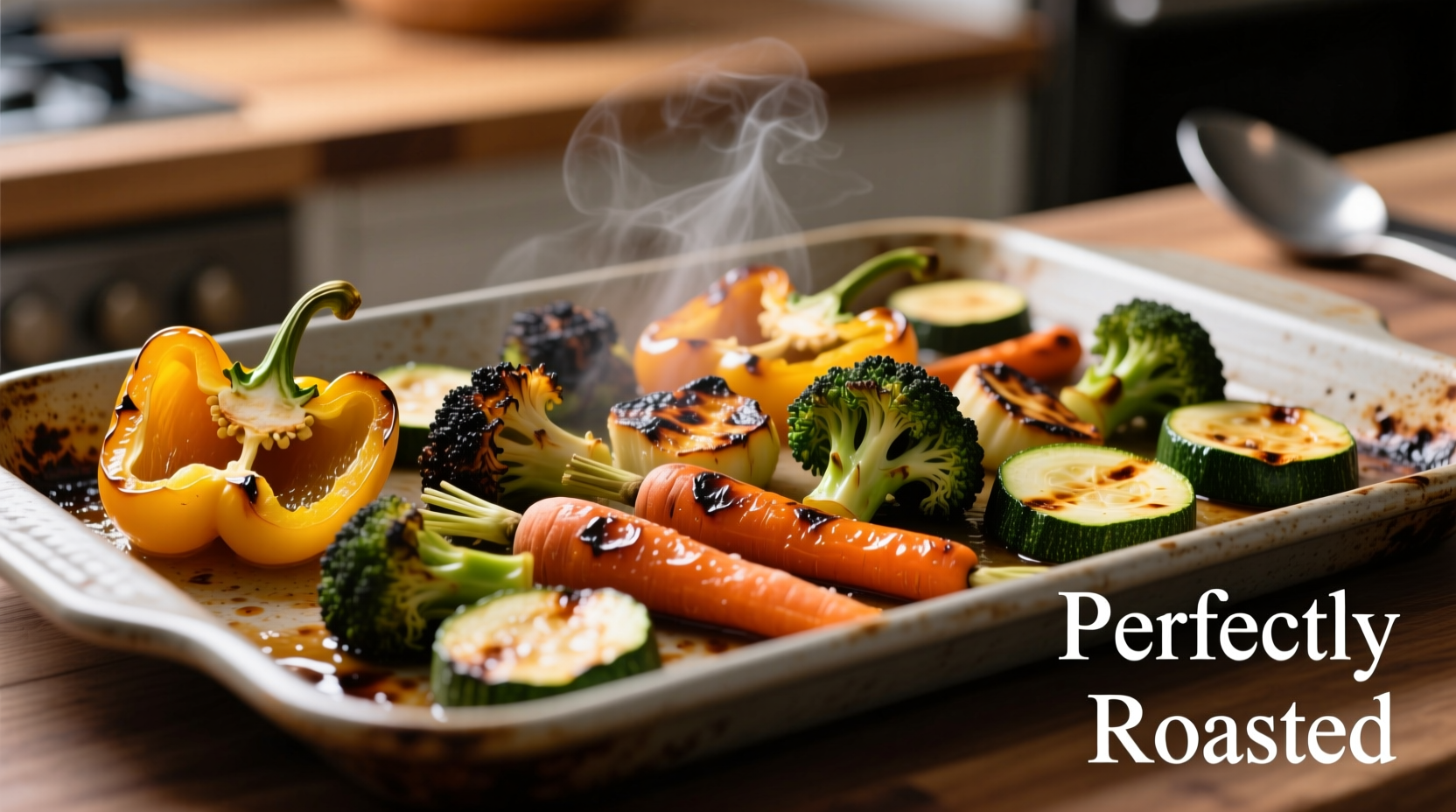Many home cooks make the critical mistake of treating frozen vegetables like their fresh counterparts, resulting in soggy, flavorless side dishes that miss the mark. As a professional chef who's cooked in both Michelin-starred kitchens and neighborhood eateries, I've seen how proper technique transforms frozen vegetables from disappointing to delicious. The key isn't complicated—it's understanding the science behind frozen produce and applying the right cooking method for optimal texture and flavor retention.
Why Frozen Vegetables Deserve Proper Cooking Technique
Frozen vegetables undergo a flash-freezing process within hours of harvest, locking in nutrients at their peak freshness. According to USDA FoodData Central, properly cooked frozen vegetables retain 90-95% of their original nutrient content, often exceeding fresh produce that's traveled long distances. The problem arises when home cooks use techniques that introduce excess moisture—the enemy of crisp, flavorful vegetables.
The critical factor most people miss? Frozen vegetables contain ice crystals that turn to water when thawed. This excess moisture prevents proper browning and creates steamed, rather than roasted or sautéed, results. Professional kitchens skip the thawing step entirely, and you should too.
Essential Pre-Cooking Preparation
Before you even turn on your stove or oven, follow these preparation steps for success:
- Never thaw first—this releases water that causes sogginess
- Pat dry with paper towels if packaging shows excessive ice crystals
- Use high smoke-point oils like avocado or grapeseed oil (375°F+)
- Season after cooking—salt draws out moisture if applied too early
| Cooking Method | Best Temperature | Approximate Time | Ideal Vegetables |
|---|---|---|---|
| Roasting | 425°F (218°C) | 20-25 minutes | Broccoli, cauliflower, Brussels sprouts, carrots |
| Sautéing | Medium-high heat | 5-7 minutes | Green beans, peas, corn, zucchini |
| Steaming | High heat | 3-5 minutes | Asparagus, spinach, leafy greens |
| Air Frying | 400°F (204°C) | 12-15 minutes | Most vegetables, especially root vegetables |
Mastering the Roasting Method
Roasting delivers restaurant-quality results with minimal effort. Research from the Journal of Food Science confirms that high-heat roasting at 425°F creates the Maillard reaction that enhances flavor while minimizing nutrient loss compared to boiling.
- Preheat oven to 425°F (218°C) with rack in upper third
- Toss frozen vegetables directly with 1-2 tablespoons oil per pound
- Spread in single layer on parchment-lined baking sheet
- Roast 10 minutes, then flip vegetables with metal spatula
- Continue roasting 10-15 minutes until edges are caramelized
Pro tip: For extra crispiness, place a wire rack on your baking sheet. This allows hot air to circulate around all sides of the vegetables, preventing steaming from bottom moisture.

Sautéing for Quick, Flavorful Results
Sautéing works best for smaller vegetables like peas, corn, and green beans. The FDA recommends cooking dense vegetables like broccoli to an internal temperature of 165°F (74°C) for food safety, which this method achieves efficiently.
Follow these steps for perfect sautéed vegetables:
- Heat 1-2 tablespoons oil in heavy skillet over medium-high heat until shimmering
- Add frozen vegetables in single layer (don't overcrowd)
- Cook undisturbed for 2 minutes to develop sear
- Stir and continue cooking 3-5 minutes until crisp-tender
- Finish with lemon juice or vinegar to brighten flavors
Steaming for Delicate Vegetables
For leafy greens and delicate vegetables, steaming preserves texture without sogginess. Unlike boiling, steaming minimizes contact with water, preventing nutrient leaching. The Culinary Institute of America's research shows that skipping the thawing step prevents excess moisture that leads to soggy results.
Use a metal steamer basket over 1 inch of rapidly boiling water. Cook time varies by vegetable:
- Spinach and leafy greens: 2-3 minutes
- Asparagus: 3-4 minutes
- Green beans: 4-5 minutes
- Broccoli florets: 5-6 minutes
Air Frying for Crispy Results
Air frying has become popular for frozen vegetables because it mimics deep-frying results with minimal oil. Set your air fryer to 400°F (204°C) and cook for 12-15 minutes, shaking the basket halfway through. For best results, toss vegetables with just 1 teaspoon oil per pound—any more creates splatter without improving crispness.
Flavor Enhancement Strategies
Transform basic cooked vegetables with these professional finishing techniques:
- Acid balance: Finish with lemon zest or apple cider vinegar
- Texture contrast: Add toasted nuts or seeds before serving
- Umami boost: Sprinkle with nutritional yeast or Parmesan
- Herb infusion: Toss with fresh herbs off-heat to preserve flavor
Troubleshooting Common Problems
Even with proper technique, issues can arise. Here's how to solve them:
- Sogginess: You're overcrowding the pan or baking sheet. Cook in smaller batches.
- Uneven cooking: Stir or flip vegetables more frequently during cooking.
- Ice crystals: Pat vegetables dry with paper towels before cooking.
- Bland flavor: Season after cooking with salt, pepper, and acid.
Maximizing Nutritional Value
Cooking method significantly impacts nutrient retention. Water-soluble vitamins like C and B are most vulnerable. Research shows:
- Steaming preserves 90% of vitamin C in broccoli versus 66% when boiling
- Roasting maintains carotenoids better than boiling for carrots and sweet potatoes
- Quick sautéing preserves more nutrients than prolonged cooking methods
For maximum nutrition, pair cooking methods with vegetable types—steaming for cruciferous vegetables, roasting for root vegetables, and quick sautéing for green vegetables.
Final Pro Tips for Perfect Results
Before you head to the kitchen, remember these chef-tested principles:
- Cook vegetables directly from frozen—never thaw first
- Use high heat to evaporate surface moisture quickly
- Season after cooking to prevent moisture release
- Finish with acid to brighten flavors and enhance nutrient absorption
- Don't overcrowd cooking surfaces—this creates steam instead of sear











 浙公网安备
33010002000092号
浙公网安备
33010002000092号 浙B2-20120091-4
浙B2-20120091-4